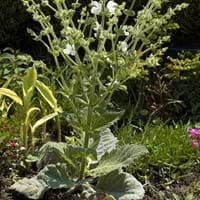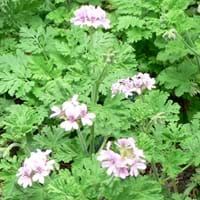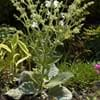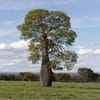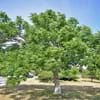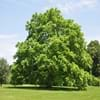Life Span
Biennial
Annual
Type
Herbs, Shrub
Tender Perennial
Origin
Mediterranean, Northern Africa
Hybrid origin
Types
Not Available
herbaceous annuals
Habitat
Temperate Regions
Temperate Regions, Tropical Forests
USDA Hardiness Zone
5-8
10-15
AHS Heat Zone
8 - 5
Not Available
Sunset Zone
21,22
8, 9, 14, 15, 16, 17, 18, 19, 20, 21, 22, 23, 24
Habit
Rosette/Stemless
Clump-Forming
Flower Color
White
White, Light Pink
Flower Color Modifier
Bicolor
Bicolor
Fruit Color
Not Available
Not Available
Leaf Color in Spring
Silver
Green, Yellow green
Leaf Color in Summer
Silver
Green, Gray Green, Yellow green
Leaf Color in Fall
Silver
Green, Gray Green, Yellow green
Leaf Color in Winter
Light Green
Light Green
Leaf Shape
Oval with a pointed tip and fine teeth along their edges
Linear to lanceolate
Plant Season
Spring, Summer, Fall
Spring, Summer, Fall, Winter
Sunlight
Full Sun, Partial Sun
Full Sun, Partial Sun
Type of Soil
Clay, Loam, Sand
Loam, Sand
The pH of Soil
Acidic, Neutral, Alkaline
Neutral, Alkaline
Soil Drainage
Well drained
Well drained
Bloom Time
Summer, Late Summer, Early Fall
Indeterminate
Tolerances
Not Available
Drought
Where to Plant?
Ground, Pot
Ground
How to Plant?
Seedlings
Root Division, Seedlings
Plant Maintenance
Medium
Medium
Watering Requirements
Average Water Needs, Never Over-water, Requires regular watering
Water when soil is dry
In Summer
Lots of watering
Lots of watering
In Spring
Moderate
Moderate
In Winter
Average Water
Average Water
Soil pH
Acidic, Neutral, Alkaline
Neutral, Alkaline
Soil Type
Clay, Loam, Sand
Loam, Sand
Soil Drainage Capacity
Well drained
Well drained
Sun Exposure
Full Sun, Partial Sun
Full Sun, Partial Sun
Pruning
Remove damaged leaves, Remove dead branches, Remove dead leaves
Remove damaged leaves, Remove dead branches, Remove dead leaves
Fertilizers
All-Purpose Liquid Fertilizer, Apply 10-10-10 amount
All-Purpose Liquid Fertilizer
Pests and Diseases
Red blotch, Slugs, Snails
Red blotch
Plant Tolerance
Drought
Drought
Flower Petal Number
Single
Single
Fragrant Bark/Stem
No
Yes
Foliage Texture
Coarse
Medium
Foliage Sheen
Matte
Matte
Attracts
Snails
Butterflies
Allergy
no allergic reactions
Not Available
Aesthetic Uses
Showy Purposes
Landscape Designing, Showy Purposes
Beauty Benefits
Not Available
Not Available
Environmental Uses
Air purification
Air purification
Medicinal Uses
Antiseptic, Astringent
Fever, Intestinal irritations, Kidney problems, Respiratory Disorders, Wounds
Part of Plant Used
Leaves
Flowers, Leaves, Seeds
Other Uses
Used for its medicinal properties
As a tea substitute, Culinary use, Medicinal oil, Oil is used in perfume, soaps, creams, etc., Used as essential oil, Used As Food
Used As Indoor Plant
Yes
No
Used As Outdoor Plant
Yes
Yes
Garden Design
Bedding Plant, Container, Mixed Border, Rock Garden / Wall
Bedding Plant, Container, Edging, Hanging Basket, Herb / Vegetable, Houseplant, Mixed Border, Rock Garden / Wall, Tropical
Botanical Name
SALVIA argentea
PELARGONIUM 'Bitter Lemon'
Common Name
Silver Clary, Silver Sage
Bitter Lemon Scented Geranium, Scented Geranium
In Hindi
रजत बाबा
Pelargonium
In German
Silver Sage
Pelargonium
In French
Silver Sage
pélargonium
In Spanish
silver Sage
pelargonium
In Greek
Silver Sage
Pelargonium
In Portuguese
silver Sage
pelargônio
In Polish
silver Sage
pelargonia
In Latin
Argentum Sage
Pelargonium
Phylum
Magnoliophyta
Magnoliophyta
Class
Magnoliopsida
Magnoliopsida
Order
Lamiales
Geraniales
Family
Lamiaceae
Geraniaceae
Clade
Angiosperms, Asterids, Eudicots
Angiosperms, Eudicots, Rosids
Tribe
Mentheae
Not Available
Subfamily
Nepetoideae
Not Available
Number of Species
Not Available
Season and Care of Silver Sage and Scented Geranium
Season and care of Silver Sage and Scented Geranium is important to know. While considering everything about Silver Sage and Scented Geranium Care, growing season is an essential factor. Silver Sage season is Spring, Summer and Fall and Scented Geranium season is Spring, Summer and Fall. The type of soil for Silver Sage is Clay, Loam, Sand and for Scented Geranium is Loam, Sand while the PH of soil for Silver Sage is Acidic, Neutral, Alkaline and for Scented Geranium is Neutral, Alkaline.
Silver Sage and Scented Geranium Physical Information
Silver Sage and Scented Geranium physical information is very important for comparison. Silver Sage height is 10.20 cm and width 50.80 cm whereas Scented Geranium height is 38.14 cm and width 45.70 cm. The color specification of Silver Sage and Scented Geranium are as follows:
Silver Sage flower color: White
Silver Sage leaf color: Silver
Scented Geranium flower color: White and Light Pink
- Scented Geranium leaf color: Green and Yellow green
Care of Silver Sage and Scented Geranium
Care of Silver Sage and Scented Geranium include pruning, fertilizers, watering etc. Silver Sage pruning is done Remove damaged leaves, Remove dead branches and Remove dead leaves and Scented Geranium pruning is done Remove damaged leaves, Remove dead branches and Remove dead leaves. In summer Silver Sage needs Lots of watering and in winter, it needs Average Water. Whereas, in summer Scented Geranium needs Lots of watering and in winter, it needs Average Water.
